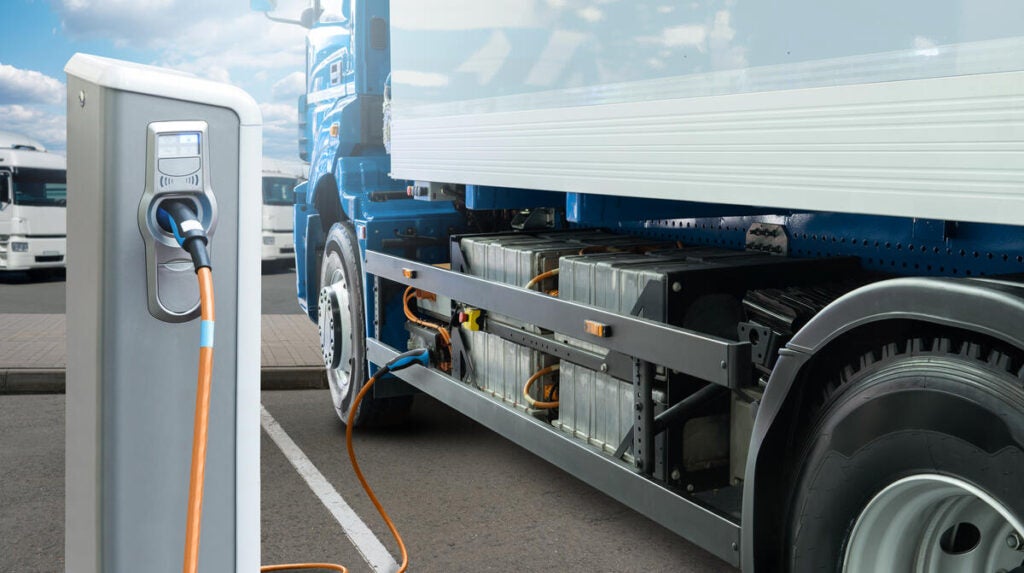In the transition to electric, what about power resiliency?
The adoption of electric trucks is on the rise, but as fleets make the transition, the idea of switching from diesel to electricity as a fuel source can raise concerns about reliability in the event of a power outage. Thankfully, this is a manageable challenge on the road to electrification — and one that many industries have experience with navigating. Hospitals, grocery stores and data centers are just a few examples of industries that have extensively explored the question of how to best address power resiliency.
A recent report published by the Environmental Defense Fund takes those lessons learned across industries and compiles them into a guide that can help fleets explore their power resiliency needs and the back-up power solutions available to them.
In the transition to electric, what about power resiliency? Share on XThe risk of outages that will actually disrupt fleets’ operations is slim for a number of reasons. The foremost reason is the reliability of the U.S. grid. Even factoring in outages caused by weather, local interruptions, and non-weather disasters, for the average U.S. utility customer, the grid was up and running 99.99% of the time in 2021. While this grid reliability will have some variation region by region, what remains true across the U.S. is the grid is an extremely reliable source of energy.
One nuance to consider when assessing the vulnerability of any given fleet to a power outage is the duration of an outage. After all, depending on the charging schedule of a fleet, not all outages will pose problems to a fleet’s ability to operate. For instance, if an electric truck has a dwell time of 8 hours, but only needs to recover 4 hours of charge to complete its route, then a power outage of fewer than 4 hours should not have a meaningful impact on the vehicle’s ability to operate that day. Moreover, through strategies such as buying chargers that can charge at marginally higher rates than necessary for a strict charging schedule, a fleet can bolster its resilience without buying a back-up system that will only be utilized a few times a year.
If a fleet has determined that purchasing a back-up power system is necessary, there are several options fleets can deploy. Battery energy storage, diesel generators, natural gas generators and solar are back-up power solutions that might come up when fleets are looking for technologies to deliver power during an outage. Each back-up power solution comes with benefits and drawbacks.
For fossil fuel solutions such as diesel generators or natural gas generators, they have high energy density and relatively low up-front costs. However, fossil fuel generators come with several drawbacks such as high maintenance needs and dangerous air and climate pollutants.
Battery energy storage systems and solar power also have their drawbacks, namely lower energy density and higher upfront costs, but those drawbacks are contrasted by several benefits unique to green solutions such as high flexibility, non-existent to low fuel costs, low maintenance needs, eligibility for tax credits and the ability to provide non-resilience value. An example of this non-resilience value would be the savings in energy costs that can be attained by using solar-plus-storage.
Cost is a paramount consideration when weighing different back-up power solutions. According to our study, solar-plus-storage was found to be the most cost-effective solution using a net present value of a 20-year project. In fact, while solar-plus-storage has higher upfront costs, it was the only back-up power solution that was found to provide value greater than the investment required to purchase the solution. The high value of solar-plus-storage can be attributed primarily to the energy savings generated by this system during non-resilience events.
The power resiliency needs of each fleet will be unique. For any fleet, an important first step is to establish its objectives for power resiliency and then assess what back-up power solutions, if any, will be necessary to achieve those objectives. Power resiliency needs will vary from geography and type of fleet, but what remains true is fleets have many tools to tackle power resiliency.











